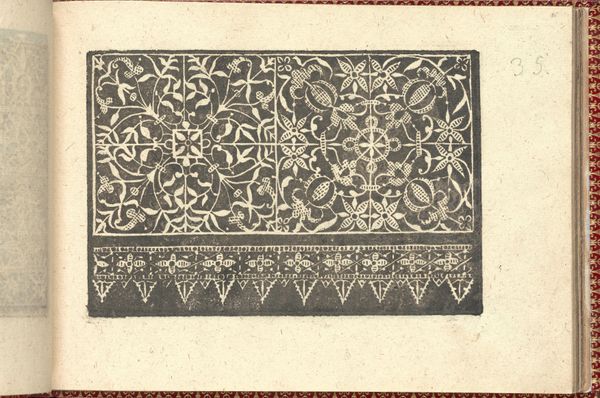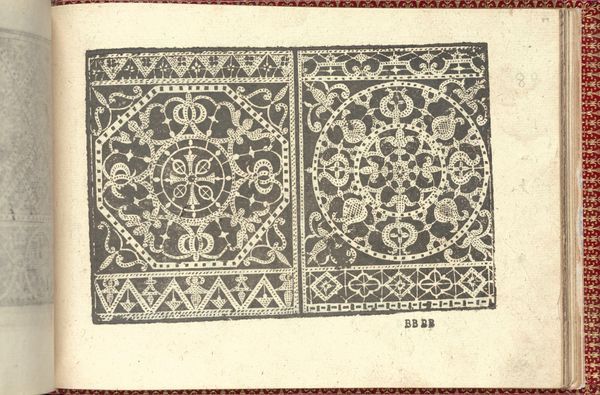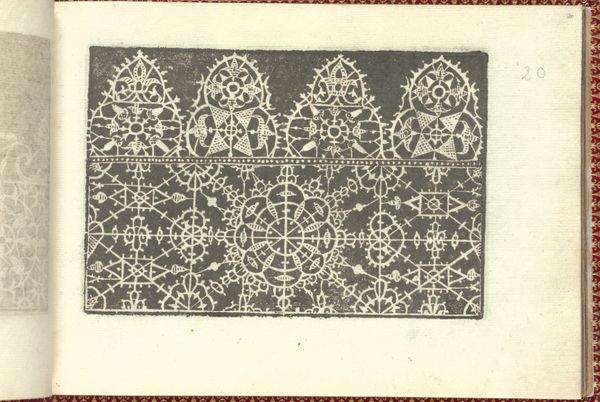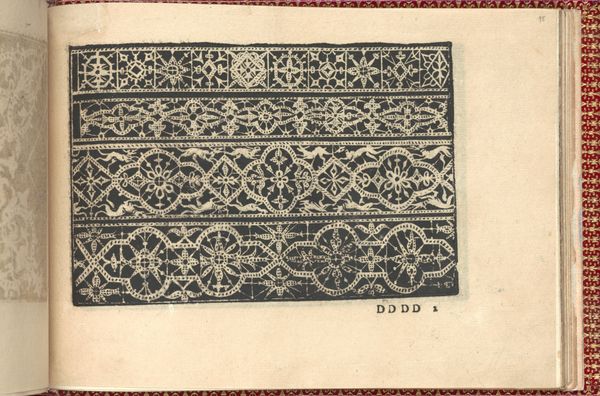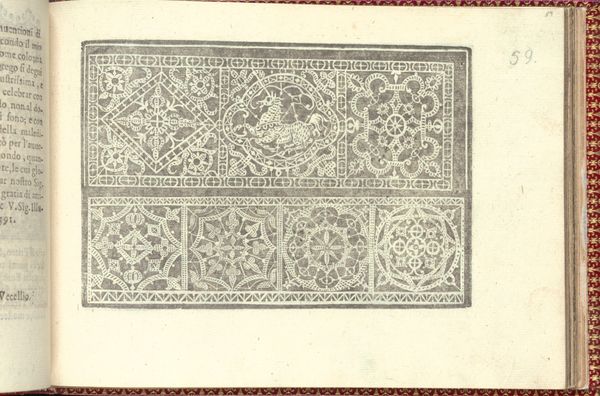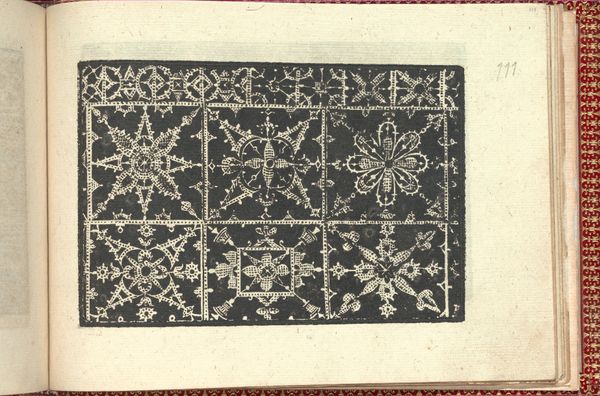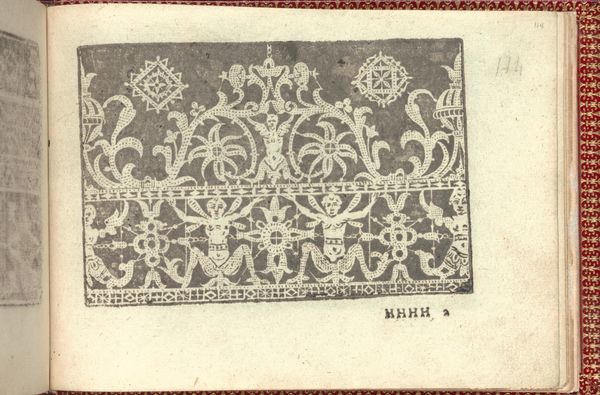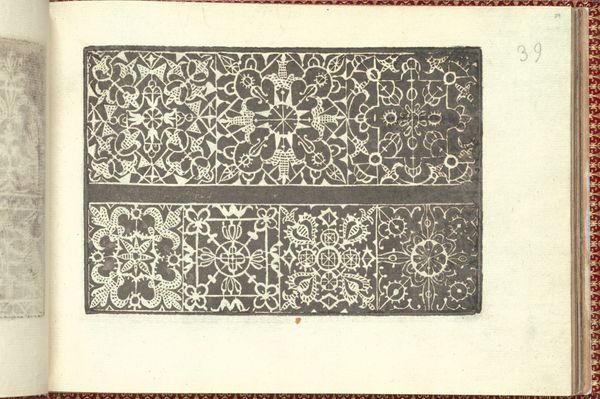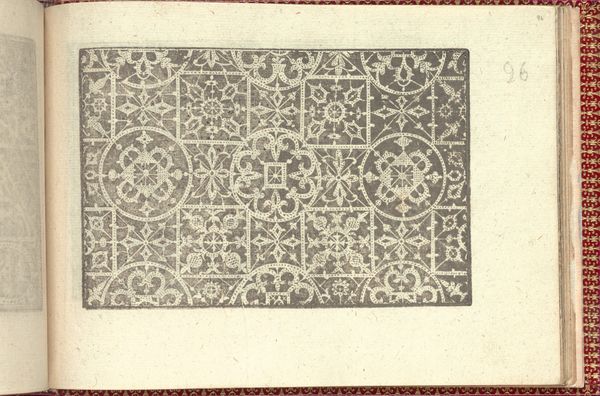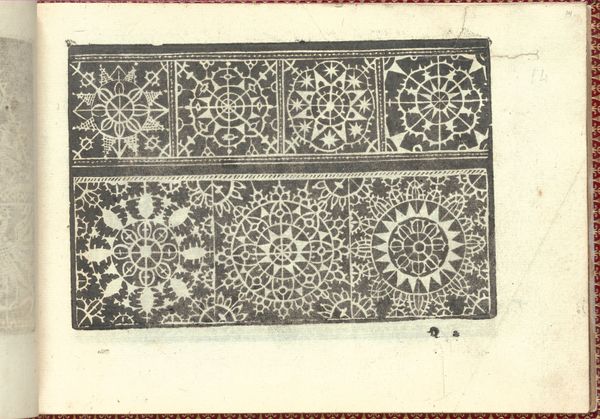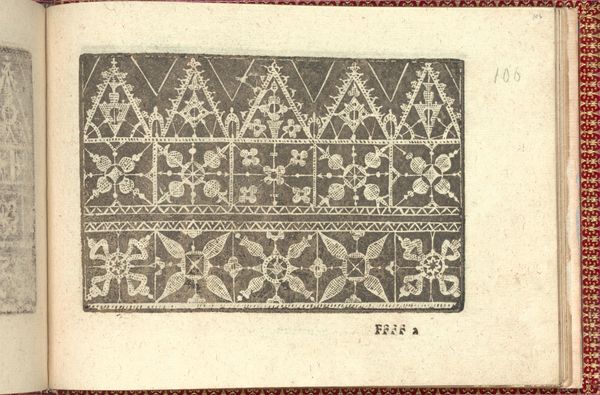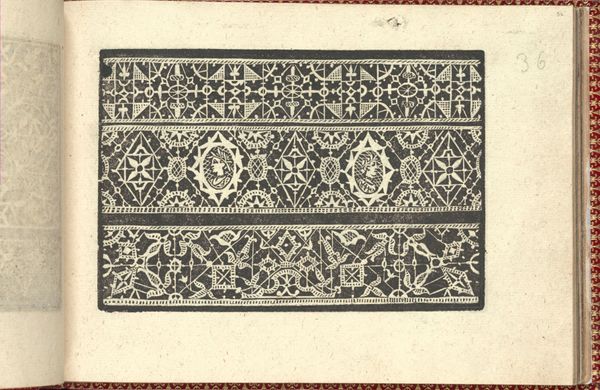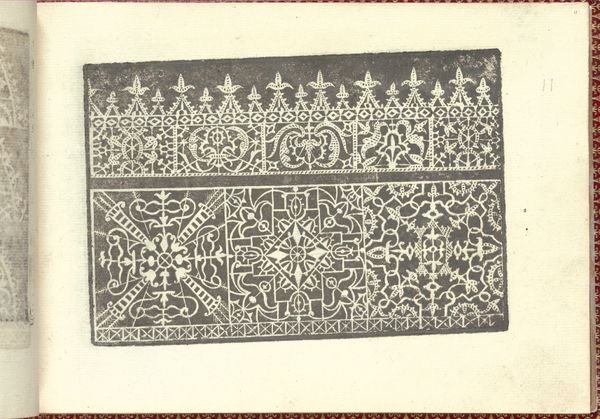
Corona delle Nobili et Virtuose Donne: Libro I-IV, page 113 (recto) 1601
0:00
0:00
drawing, ornament, print, paper, ink, engraving
#
drawing
#
ornament
# print
#
book
#
paper
#
11_renaissance
#
ink
#
coloured pencil
#
geometric
#
engraving
Dimensions: Overall: 5 1/2 x 7 11/16 in. (14 x 19.5 cm)
Copyright: Public Domain
Curator: Here we have a page from Cesare Vecellio’s "Corona delle Nobili et Virtuose Donne," published in 1601. It's a rather fascinating object, found at the Metropolitan Museum of Art. Editor: Intricate! It feels like peering into a world of tiny, ornate snowflakes, doesn’t it? The repetition is almost hypnotic. Curator: Vecellio created these books as guides, pattern books if you will, that spoke to the visual and material culture of Renaissance women. Think of it as a manual reflecting the fashions, customs, and roles ascribed to noble and virtuous women. Editor: The geometric precision achieved through ink and engraving is striking, isn’t it? The book lies open, the paper aged, presenting rows of geometric figures that dance between representation and abstraction. I am curious, is that some color I spy? Curator: You have a sharp eye! There appears to be hints of colored pencil as well. And the fact that Vecellio included patterns underscores the importance placed on handiwork within feminine societal roles, a visual textbook dictating expectations, if you will. Editor: But within these expected forms, doesn’t one also sense a kind of silent rebellion, a potential for individualized expression within those structured boundaries? To add that little touch of colored pencil. The motifs themselves vary greatly: there is something organic, and even explosive within this rigidity. It’s the dialectic in action! Curator: Absolutely. Pattern books became incredibly popular, signifying the rise of printed media’s influence, standardizing aesthetics and distributing them widely. Editor: And looking at the composition itself, that subtle tension between the order of the grid and the whimsical flair of each individual motif holds such interest. Curator: It makes me consider how these patterns, beyond their decorative purpose, reveal the socio-political expectations leveled at women in Renaissance society. The ornament almost acts as a script of its time. Editor: It all makes you see it in an unexpected way! These rows and their patterns now carry such significant context. It all makes one reflect on gender and creativity. Curator: Indeed, art offers a profound opportunity for that sort of re-evaluation and contextualization.
Comments
No comments
Be the first to comment and join the conversation on the ultimate creative platform.
